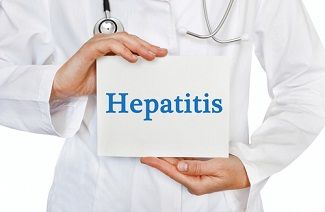HCV Reinfection Rare Among Patients Receiving Opioid Agonist Therapy
Rates of hepatitis C reinfection were low among people receiving opioid agonist therapy, according to a new study, which highlights the importance of risk reduction interventions and HCV treatment for people who inject drugs and people receiving opioid agonist therapy.

After successful antiviral treatment of hepatitis C infection, the risk of reinfection was low among patients receiving opioid agonist therapy, a recent study found.
The study, published in Annals of Internal Medicine, was a three-year extension study involving 199 participants in the CO-STAR (Hepatitis C Patients on Opioid Substitution Therapy Antiviral Response) study, which enrolled patients at 55 clinical trial sites in 13 countries.
Ten study participants had a total of 11 reinfections, with six of those reinfections occurring in the first 24 weeks after treatment. The rate of HCV reinfection was 1.7 per 100 person-years after successful direct-acting antiviral (DAA) therapy.
“The rate of reinfection was highest in the period immediately after the completion of treatment, highlighting the importance of intensified harm reduction strategies (including access to opioid agonist treatment and access to sterile needles/syringes) during this time,” lead author Jason Grebely, PhD, head of the Hepatitis C and Drug Use Group in the Viral Hepatitis Clinical Research Program at the Kirby Institute in Sydney, told Contagion. “Also, the risk of reinfection was higher in people with ongoing injecting drug use and those with recent needle/syringe sharing.”
People with recent injecting drug use had a reinfection rate of 1.9 per 100 person-years, compared with 0.5 per 100 person-years among those without recent injecting drug use. About 21% of participants reported ongoing injecting drug use, and 59% reported ongoing drug use.
Strengths of the study include a large sample size, well-characterized cohort, good characterization of reinfection with viral sequencing and regular follow-up and study retention, Grebely noted. Among study participants, 90% were retained in follow-up for at least a year and 71% for three years.
“It provides a very good estimate of HCV reinfection among people who have received OAT and highlights the importance of ensuring that strategies are in place to prevent reinfection (e.g. needle and syringe or syringe service programs, etc),” he said.
Two of 10 patients with reinfection spontaneously cleared their reinfection.
“This suggests that even successful direct-acting HCV therapy may provide some protection against future infection in some individuals,” Grebely said. “Further work understanding the immune response in people with spontaneous clearance of HCV reinfection following could inform HCV vaccine design.”
The study provides new insight that could help shape policy decisions. Previous systematic reviews estimated higher rates of HCV reinfection.
“Given that reinfection has often been cited as a concern by some providers as a reason for not offering treatment to people receiving opioid agonist treatment, the low reinfection rate in this study will be incredibly important for guiding practice and ensure therapy is not withheld from people who inject drugs and people receiving opioid agonist therapy,” Grebely said. “In terms of policy implications, this data may also help to facilitate the removal of reimbursement restrictions based on recent drug/alcohol use criteria that are in place among many payers in the United States.”
More research is needed on interventions to reduce HCV reinfection risk. A systematic review on interventions to enhance HCV care published recently in The Lancet Gastroenterology and Hepatology found that medical chart reminders, provider education and point-of-care antibody testing improved outcomes.
“One of the next hot areas in HCV is around scaling up point-of-care HCV testing,” Grebely said. “The availability of the Xpert HCV Viral Load Fingerstick assay has led to major clinical changes, given the ability to move to a single-visit test and treat model.”




















